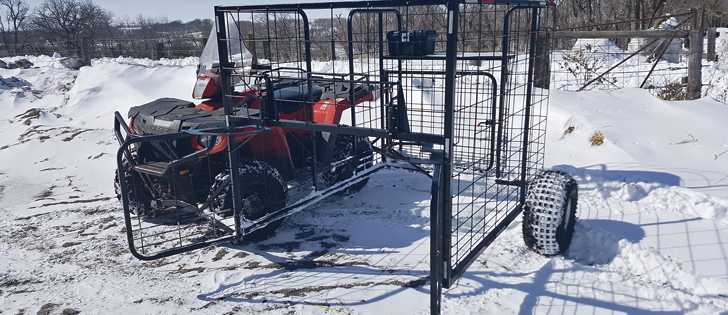GryphSens machine uses a drop of cow’s blood to test for diseases that can cause inflammation or reduce immunity response
The University of Guelph has developed a device that promises to make testing easier for two different dairy diseases.
The GryphSens is a device that allows diary producers to test for non-esterified fatty acid (NEFA) and beta-hydroxybutyrate (BHBA) in their animals without having to send samples to a laboratory.
“If the farmers have the opportunity to do the test by themselves rather than shipping the samples to the lab, it adds not only convenience but more of a early warning system,” said Suresh Neethirajan, the project’s principal researcher.
Read Also

Canada’s plant hardiness zones receive update
The latest update to Canada’s plant hardiness zones and plant hardiness maps was released this summer.
The device uses a droplet of cow blood, which is put onto a cartridge and inserted into the digital reading system.
The screen on the system will let the producer know if the cow has NEFA or BHBA.
The device should provide producers with an early warning system so they can adapt strategies to help, which might entail changes in feed and housing.
“So the farmers can once in a while test it on the farm, and if there are further concerns then they can call for the veterinarians,” Neethirajan said.
Neethirajan hopes the new device will offer a lower cost testing option for producers.
“The idea is to bring down the two disease detection to probably $2 per test for both NEFA and BHBA. Right now, the test costs $10 to $20,” Neethirajan said.
David Hobson and Andrea Weeks, from the Catalyst Centre at the University of Guelph are working on the commercialization for GryphSens.
They have filed a U.S. provisional patent and are in talks with various companies to have one of them manufacture the device and put it on the market.
They expressed hope that a milking robotic machine company would pick up the technology, so a cow could be tested every time it is milked.
“So really the game here is early detection. So that’s why we think inline monitoring. So every time a cow is coming in to get milked, if you can see that it’s trending upwards…. It provides a trigger point for people to then get in-volved,” Hobson said.
Depending on which company takes over commercialization, consumers could see the GryphSens on the market in about two years.
Dr. John Ayres, veterinarian at Norsask Veterinary Group in Rosthern, Sask., sees the GryphSens as promising.
“Sounds interesting. There are products like that on the market right now to one degree or another. Some of them will test blood, some of them will test milk, some of them will test urine,” Ayres said.
Ayres said a device of this kind would be more effective if it could test a whole herd of cattle instead of an individual cow.
“Usually the best results I’ve seen from whatever technology they’re using is to use it as a herd level test to indicate whether you’ve got a herd level nutritional issue kind of thing,” Ayres said.
Contact ashley.robinson@producer.com















